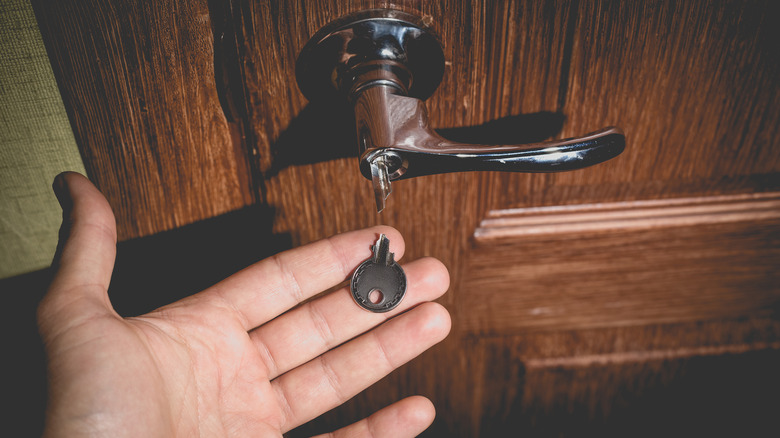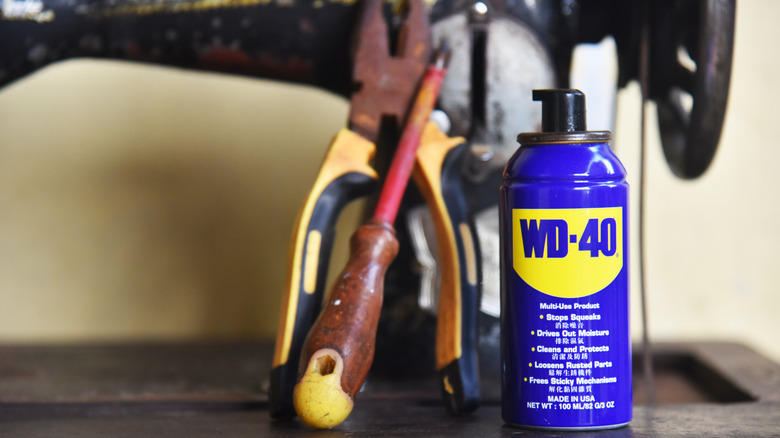If You Have A Broken Key Stuck In A Lock, You'll Be Glad To Have WD-40 In The House
WD-40 is like the Russian nesting doll of household sprays; just when you think you've discovered every use for it, another use is hiding inside. It's a true must-have item that can solve an abundance of common annoyances and tricky problems around the home, including the unfortunate circumstance of a stuck and broken key. The science behind WD-40 aiding in such a task lies in its unique set of ingredients. While very few people know the exact formula, the company behind this magical product does affirm the spray is a mix of several lubricants. A broken key will slide out much easier when sprayed with this special blend.
Putting your bottle of WD-40 to use in the most efficient way, though, is dependent on a few factors. First, you must be able to access the key with needle nose pliers, tweezers, or a similar tool. A key that's broken deep inside with no access point will need the attention of a professional. You'll also likely need to call in a locksmith if the lock and key are misaligned and refuse to return to their starting possition. Your chances of removing the key on your own are much greater if you're lucky enough to avoid either of those situations.
How to remove a stuck key with WD-40
Aligning the lock and key is accomplished by returning the key to the position in which you first inserted it. This should place the rough edge of the key vertically along the top of the lock cylinder. If that rough edge is not aligned at the top, no amount of tricks will free the key. You may be able to accomplish this step easily but don't panic if you're having trouble. It's at this point you grab the WD-40.
Bend the supplied application straw to a point where it can spray inside the keyway and into the crevices of the lock itself. Wait a beat for the spray to start working and then pinch the top of the key with your fingers or grabbing tool of choice, and twist the key until it's properly aligned. It's at this point you'll want to begin gently working the key out by moving it up and down in a steady motion. Be sure to avoid going side to side as that could cause the key to break further. Once the key is freed, go ahead and spray some more WD-40 inside to help prevent future troubles. You'll want to make a reminder, too, to lubricate and clean all your locks every three to six months.
Alternative options for removing a broken key
While WD-40 is an absolute delight of a product, some keys are just too stuck to rely on one solution. Ice is a great addition to the problem-solving team. The cold temperature will make the metal contract and loosen its grip on the key. Just wrap some ice cubes in a napkin or thin dish towel and hold firmly against the lock for two or three minutes. One note on this method, though. It works much better if you're trying it in the spring or summer; it may not do much if exterior temperatures are already cool.
You can also pair the ice or WD-40 trick with a paperclip or fishing hook. Both are thin enough to slip into an open spot in the keyway and then hook onto the grooves of the key for better leverage. If you really want to get fancy, you can purchase a specialized key extractor tool set. Several options are available on Amazon, Walmart, or at your local home improvement store.


